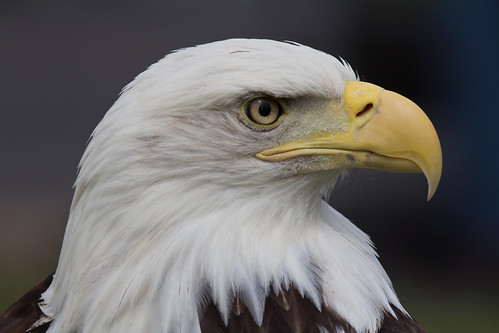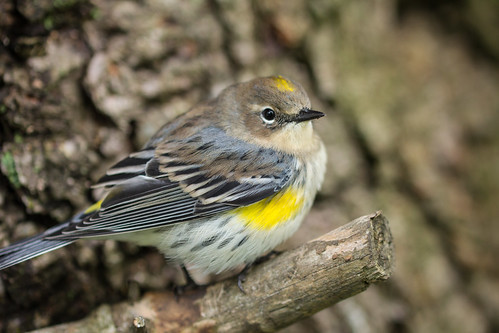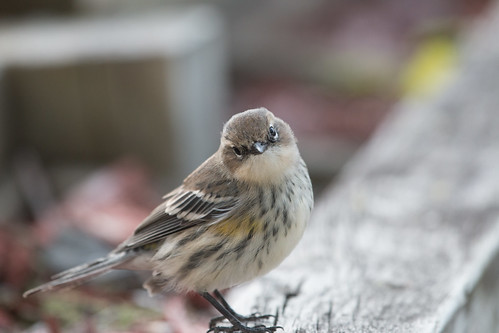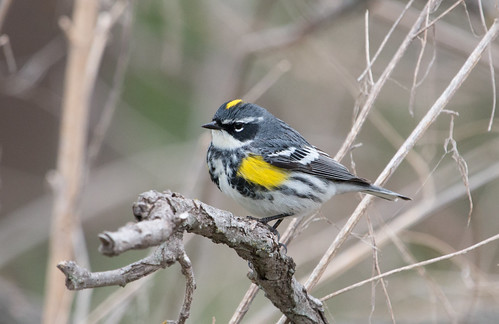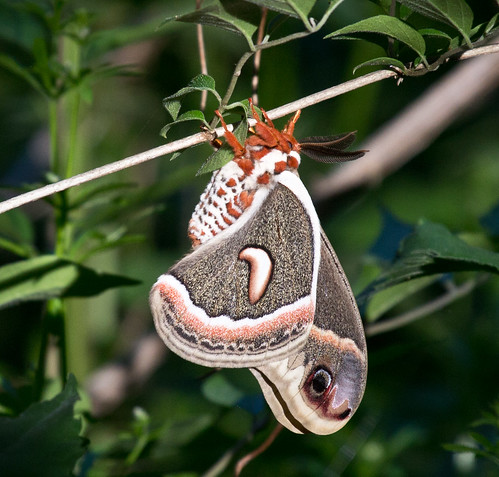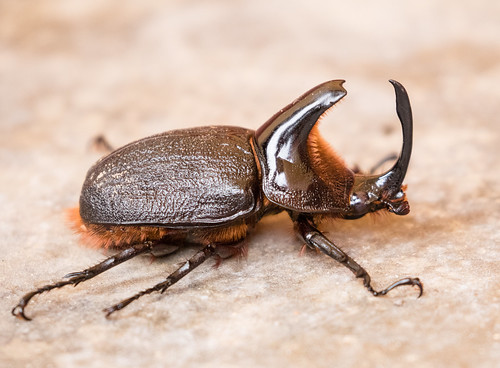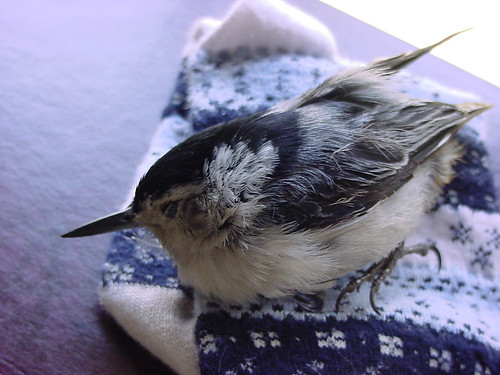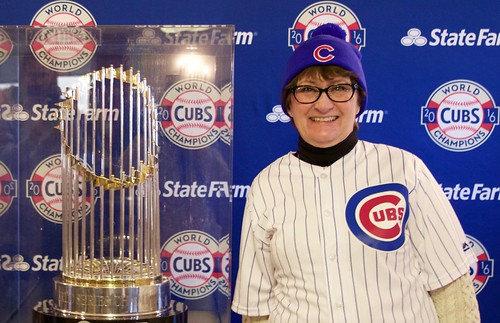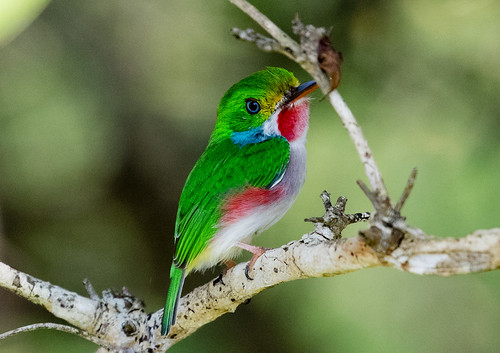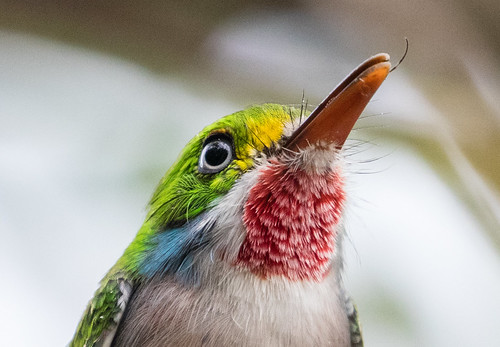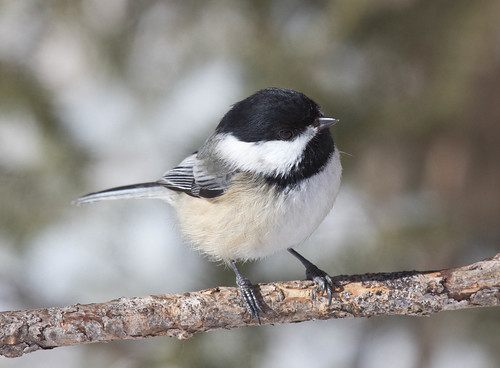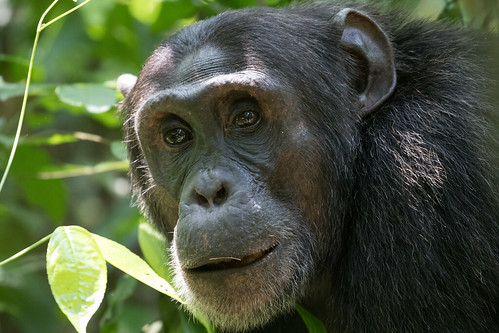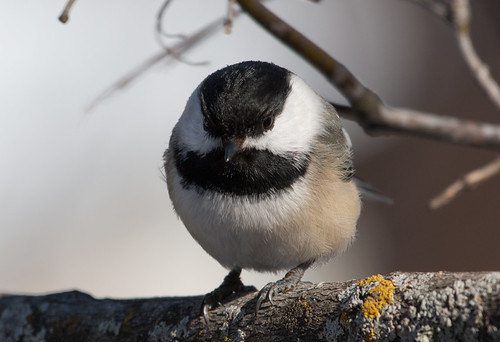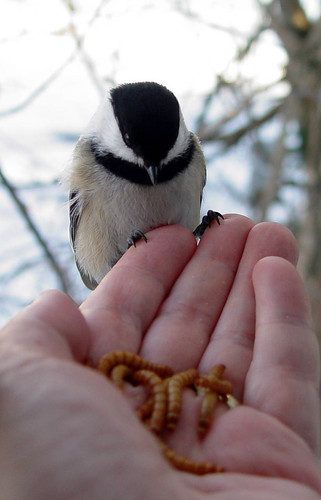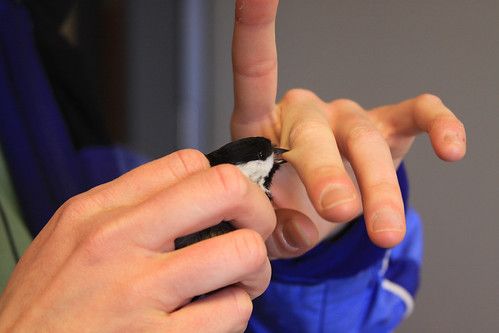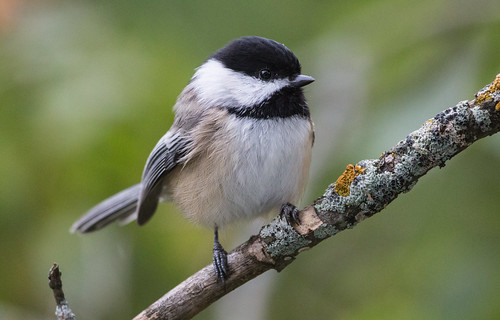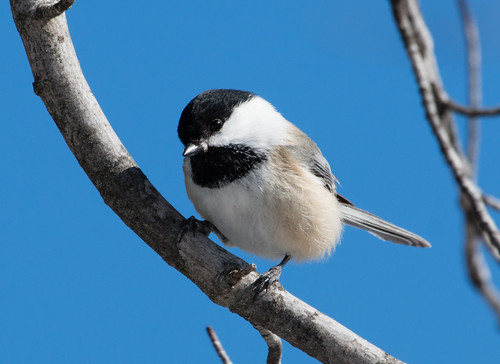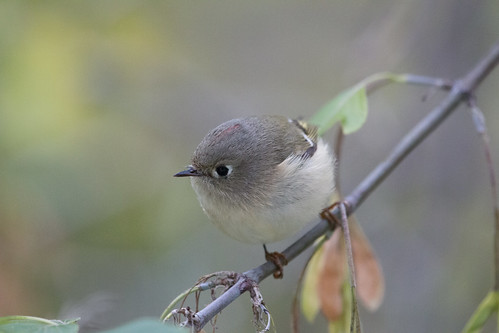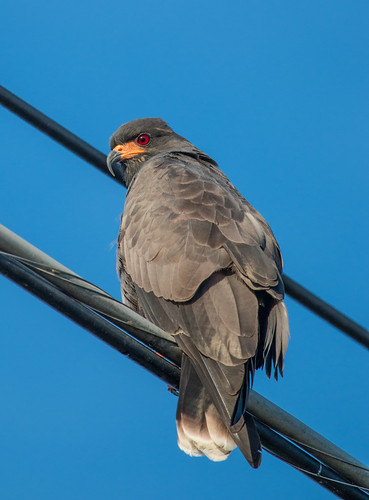Tuesday, October 31, 2017
That "eagle rebirth" video? Poppycock!
Back in 2008, at least a hundred people forwarded an email to me showing a series of photos titled "Rebirth of the Eagle." It was the most patently ridiculous thing I'd ever seen. Now, in 2017, a website (yourdost dot com--I'm not going to link to it) that is supposed to be helping people resolve problems has reissued it as a video. Using magnificent National Geographic footage of various species of eagles and a cheesy, ostensibly inspirational soundtrack, this video was created to show people that essential change can be painful but is still good.
Right from the start, the text makes it clear that not one scientist was involved with the production, saying, “The eagle has the longest lifespan of its species.” Not only does the sentence make no sense whatsoever, but the video shows several species called eagles but which are actually not closely related, including Bald, Golden, and Harpy Eagles. The word poppycock was immediately starting to pop out of my mouth.
According to the video, the eagle can live to be 70 years old if it makes a hard decision. The oldest wild Bald Eagle on record at the US Geological Survey’s bird banding laboratory lived to be 38 years and 1 month; the oldest Golden Eagle lived for 31 years and 8 months. Captive birds can live longer, but the oldest captive Bald Eagle I could find in the records lived to be only 48—more than a couple of decades shorter than 70 years.
Eagles and other birds survive day to day by making thousands of quick decisions. There’s never a point in a bird’s life when it has the luxury to sit down and make a hard decision about whether or not to continue living. While it was contemplating the issue, a predator would come in and kill it.
The video claims that when an eagle is in its 40s, its long and flexible talons can no longer grab prey, and the eagle grows hungry. Based on longevity records, this is of course true because by then the eagle is dead. But as long as an eagle is alive, its talons can grab food—the talons' resting position is closed, so even in death an eagle’s toes are its strongest part.
Then the video says that at that age the eagle’s long sharp beak becomes bent—the video closes in on the bill of an eagle showing the natural curve of the upper bill, a shape necessary throughout life for ripping apart prey. Then the video says that the eagle's "old-aged, heavy wings become stuck to the bird’s chest making it impossible to fly." Eagles molt their flight feathers one by one throughout the year throughout their lives, and molt their body feathers every year. Some feathers may get gooped up from slimy fish or rabbit entrails, but birds of prey preen a lot, keeping each feather in good condition for as long as it lasts. When an eagle can no longer fly and catch prey, it dies, except, apparently, in the alternate universe of this ridiculous video.
According to the video, a 40-year-old eagle has two options—die or go through a painful period of change that lasts 150 days. Now it may well take that long for a complete feather molt, but that’s hardly a painful or debilitating process. So the mystery of what painful process of change the eagle might be going through kept me riveted.
First, that 40-year-old eagle whose aging, heavy wings stuck to its chest making it impossible to fly magically takes wing and flies up to a mountaintop. Now the bird must knock its beak against a rock until it plucks it out. Since this obviously never happens in reality, there is of course no video footage showing an eagle without its beak. After plucking the beak out, the eagle waits for a new beak to grow in, and then it plucks out its talons. Again, of course there is no video footage of this.
Then, the eagle plucks out all its feathers. Since real molt happens just a few feathers at a time, there is of course no photos of any poor literally bald eagles plucked naked, even though regrowing feathers takes supposedly 150 day. After this rebirthing ordeal, the renewed eagle takes off and lives for 30 more years, apparently hiding out from bird banders or the US Geological Survey Bird Banding Laboratory for the rest of its life so no one will ever confirm its longevity.
I guess that in this 2017 world of alternate facts and disinformation, right when people are growing increasingly disconnected from nature, we shouldn't be too surprised that people could believe an eagle could pluck its own beak and talons and live to be 70. But, really, we're now living in a world where real Bald Eagles can be seen in just about every state, even in many urban centers. It's far, far easier for anyone to observe Bald Eagles up close and personal today than in past decades throughout even the longest lifetimes. It's impossible for me to understand why anyone would create a video bearing such utter falsehoods, and even harder to understand why people, including some pretty smart birders, could possibly think this video was true. Why do we waste time looking at videos about eagles rather than spending our time watching living, breathing, eagles and focusing on their honest-to-goodness splendor?
The video was ostensibly created to give people hope, trying to inspire people stuck in bad situations to make hard changes to improve their lives. But grounded in complete falsehoods, all it taught me was that we're not living in an Information Age, but in a Misinformation Age. I hope National Geographic both disavows this utterly inappropriate use of their video footage and sues the pants off the perpetrators.
Tuesday, October 24, 2017
Henry and Eden's Warbler Rescue
On Sunday, October 22, two children named Henry and Eden came to my house with a problem—a tiny bird was trapped in their shed. They live across the street from me, so it was an easy matter to head right over. One of Henry’s favorite birds in the world is the American Goldfinch, and he described the bird as being about the size of a goldfinch, with yellow under the wings. Based on this accurate description as well as the point in fall migration we’re at right now, I was pretty sure what the bird would be before I got there, and sure enough, there it was—a Yellow-rumped Warbler.
When I’ve rehabbed warblers, I’ve often been struck by how smart they are. I don’t think a single one of them is hunkering down right now reading Ron Chernow’s best-selling book about Ulysses S. Grant—it’s a heavy book beyond even the capacity of Blue Jays to lug around or to read. The one time I visited Gettysburg, there were Blue Jays everywhere—I saw more of them than I did human Civil War buffs—but even those Blue Jays have almost certainly not checked out Chernow’s book, because Ulysses S. Grant wasn’t involved in the Battle of Gettysburg.
But even if any Yellow-rumped Warblers had ever heard of Grant, the probability that they know the Western alphabet, much less use it to read, is about as minuscule as the probability that the Chicago Cubs are going to win the 2017 World Series.
Reading skills notwithstanding, warblers are much smarter than people realize. When I was rehabbing, I immediately learned that warblers quickly adapt to temporary captivity. Within the first day or two, sometimes within the first hour, most of them would flit to my hand for mealworms as soon as I offered them. In their natural habitat, warblers wisely avoid people, but these tiny birds have to pass from northern forests down to the tropics, covering a whole lot of unfamiliar, often hostile, habitats between here and there. If they can’t quickly figure out the ins and outs wherever they find themselves, they’re not going to survive. So they’re far more curious, adaptable, and capable of learning new skills than most of us would expect.
A couple of years ago, I watched a Yellow-rumped Warbler trying to grab cluster flies at the base of a window in Port Wing, Wisconsin. There were far more flies on the inside than the outside, and so I started swatting them and carrying them outside for the little guy. The first time I dropped a handful in a flowerbox near the window, the warbler checked it out within a minute and started gobbling them down. After that, it didn’t fly off when I’d step outside, and would perch at the box as I dropped the flies in. If it finished eating my offerings before I came back out, it flew to the window and gave me a long hard stare as I scurried to get more flies for it.
There were no cluster flies inside or outside Henry and Eden’s shed windows. The shed doesn’t have a door, and apparently when the warbler flew in, it saw the bright windows and got fixated on getting out through them. I suppose if birds could read, they’d be wiser to study up on the properties of glass than read about Ulysses S. Grant, because glass is one thing they really could benefit from understanding. I’ve watched people, including some pretty smart ones, walk into glass doors, so it’s not like we humans are immune to problems with glass. Fortunately, that little warbler was smart enough to let me pick her up and take her out of the shed. After Henry and Eden had a good look, we put her in Eden’s hand. She took 10 or15 seconds to get her bearings, and off she flew!
Fall migration is fraught with danger, but with the birds’ native intelligence, and kind, vigilant kids like Henry and Eden, at least some of these warblers will make it safely to their wintering grounds and, come spring, make their way safely home to the north woods once again.
Book Review: The Moth Snowstorm: Nature and Joy, by Michael McCarthy
When people discover anything in nature for the first time, their first experiences become their benchmark for “how it’s supposed to be.” For me, starting birding in 1975 and witnessing over the decades smaller, less frequent warbler waves during spring migration, seeing fewer fall days with Broad-winged Hawk counts exceeding 10,000, and having watched the decline in Evening Grosbeaks at my feeders from hundreds most days to zero for whole years at a time, I feel a profound loss. Those who started birding more recently define warbler, hawk, and Evening Grosbeak populations as they first experienced them. If they share my sense of loss intellectually, they who never experienced the amazing abundance of what was can’t feel the loss quite so viscerally.
One British scientist just four years older than I has that same visceral sense of loss, not only about birds but about insects. Michael McCarthy has kept track of research on declining insect numbers and the current research that fully supports his long-term observations that insects have declined dramatically over the decades, starting right about the time he was born in 1947. In his exquisite book, The Moth Snowstorm: Nature and Joy, he writes about the restorative joy nature has always given him, and also about his bereavement as he sees how the abundance he experienced as a child no longer exists. This may be the most well documented, thoroughly researched book about pesticides, other intensive agricultural practices, climate change, and other factors that have led to global crashes in insect populations, and also the most deeply felt and well written conservation book, since Rachel Carson’s Silent Spring.
When McCarthy was seven years old, in 1954, living near Liverpool, his world was turned upside down when his mother was sent to a mental asylum and he was dispatched to live with his aunt and uncle. It was in their garden that he fell in love, absolutely and permanently, with butterflies.
One British scientist just four years older than I has that same visceral sense of loss, not only about birds but about insects. Michael McCarthy has kept track of research on declining insect numbers and the current research that fully supports his long-term observations that insects have declined dramatically over the decades, starting right about the time he was born in 1947. In his exquisite book, The Moth Snowstorm: Nature and Joy, he writes about the restorative joy nature has always given him, and also about his bereavement as he sees how the abundance he experienced as a child no longer exists. This may be the most well documented, thoroughly researched book about pesticides, other intensive agricultural practices, climate change, and other factors that have led to global crashes in insect populations, and also the most deeply felt and well written conservation book, since Rachel Carson’s Silent Spring.
When McCarthy was seven years old, in 1954, living near Liverpool, his world was turned upside down when his mother was sent to a mental asylum and he was dispatched to live with his aunt and uncle. It was in their garden that he fell in love, absolutely and permanently, with butterflies.
Electrifying, they were. Filling the space where my feelings should have been. And so, through this singular window, when I was a skinny kid in short pants, butterflies entered my soul.He can still find many of the species he thrilled at as a boy, but mourns how rare they have become:
Abundance gave exhilarating substance to life, to normal life, which we took entirely for granted: it seemed to be the natural order of things. Indeed, it had been there for untold centuries. It was one of the reasons I fell in love with nature, when I first sauntered out into the countryside of the Wirral as a skinny kid in the fifties to collect birds’ eggs and catch butterflies and fill glass jars with newts (to live in a washing-up bowl in our garden shed until they died, God forgive me)—and the Wirral possessed nothing of the wildlife opulence of somewhere like Dorset. But it was rich enough, and nature so rich was easy to love. Now the riches have gone, and the wildlife that surrounds us in our everyday lives in Britain, and beyond us in the greater part of the rural landscape, is, with a few exceptions, impoverished, scanty, and sparse; wildlife that is worthwhile can still be found, but it must be sought out. Abundance, blessed, unregarded abundance, has been destroyed.The title, The Moth Snowstorm, refers to the thousands of moths that once showed up in the beams of automobile headlights, and how often drivers would have to stop to clean their bug-spattered windshields. If the title refers to what we’ve lost, the subtitle, Nature and Joy, is about our species’ capacity to love and experience joy in nature, and why this is so important for us as individuals in an increasingly mechanized world, but also why our capacity to take joy in nature is essential if we’re ever going to restore it to even a shadow of what once was. The Moth Snowstorm: Nature and Joy is as important a book as it is beautiful. I’m embarrassed that I didn’t learn about it until a year after its publication. I can’t recommend it more highly.
Monday, October 23, 2017
Insect Armageddon
In May, the American Association for the Advancement of Science’s journal, Science, published a story, “Where have all the insects gone?” summarizing several long-term studies based on bodies of data from nature reserves and other areas in western Europe and America, documenting massive and dramatic declines in insects. I’ve been noticing and talking about the declines in insects that I have noticed many times since I started producing For the Birds in 1986, most recently in June after that article in Science.
I’m thrilled that researchers are finally publishing long-term studies establishing that insect populations are declining globally. On October 18, PLoS ONE published a paper titled, “More than 75 percent decline over 27 years in total flying insect biomass in protected areas.” The 12 authors analyzed data from a 27-year study in 63 nature protection areas in Germany. They found a 76 percent seasonal decline and an 82 percent mid-summer decline of flying insect biomass. This decline was consistent regardless of habitat type.
And on October 21, Michael McCarthy wrote an article for The Guardian titled, “A giant insect ecosystem is collapsing due to humans. It’s a catastrophe.” This article starts out focusing on an American biologist, Terry Erwin. Thirty-five years ago, Erwin used an insect “fog” to collect all the small living things in the canopies of 19 individual trees, all of the same species (Luehea seemannii), in a rainforest in Panama He recorded about 1,200 separate species, nearly all of them beetles and many new to science; he estimated that 163 of these species would be found on just this one tree species. He also estimated, based on what he’d collected and the fact that there are about 50,000 different tropical tree species, that if each tree species supported roughly 163 unique beetle species, that there must be more than eight million species of beetles alone in the tropical rainforest canopy, and the total canopy fauna, including insects, spiders, and millipedes, would support 20 million species. When you added species on the forest floor, he thought the total number of species could be as many as 30 million.
This was all pretty speculative, so entomologists have been arguing about the numbers ever since. But whatever the number of insect species, and the number of individual insects is, it’s huge, but also it’s falling dangerously. The Guardian article gets into why it matters. A great many crops are insect-pollinated, as are the vast majority of wild plants. As Michael McCarthy writes:
Furthermore, insects form the base of thousands upon thousands of food chains, and their disappearance is a principal reason why Britain’s farmland birds have more than halved in number since 1970. Some declines have been catastrophic: the grey partridge, whose chicks fed on the insects once abundant in cornfields, and the charming spotted flycatcher, a specialist predator of aerial insects, have both declined by more than 95%, while the red-backed shrike, which feeds on big beetles, became extinct in Britain in the 1990s.Michael McCarthy wrote a book, The Moth Snowstorm: Nature and Joy, about his boyhood memories of the insects in his aunt’s garden. Tomorrow I’ll talk about his book and about his take on why the decline in insects is such a terrible tragedy.
Ecologically, catastrophe is the word for it.
Wednesday, October 18, 2017
Gus Keri’s Depressing Cat Video
I belong to a private Facebook group that shares information for those of us fighting to keep cats indoors. Many of the posts link to studies about cat transmission of diseases to humans and wildlife, or to new research about the effects of outdoor cats on wildlife. One of the posts this week started with a stern warning.
Warning: If you have a soft heart, don't watch this video.
I took that to heart and didn’t watch the video. But I did read Gus Keri’s words. He lives in Brooklyn, New York, and writes:
I went to Calvert Vaux Park this afternoon in search of the Vesper Sparrow that was reported there. I arrived within 30 minutes of the tweet but the bird had magically disappeared. There were a few kinglets and sparrows in the area including a White-crowned Sparrow, but no Vesper. I saw a cat roaming the area, so I assumed the worst for the Vesper.
After searching for an hour, I gave up and went on birding in other parts of the park. Before the sunset, I decided to go back and see if I could find it. There were the same sparrows and kinglets but no Vesper.
Before leaving I noticed two cats sitting quietly, watching something. It was this Golden-crowned Kinglet feeding on the ground.
I suspected the cat was going to catch the bird, so I decided to record a video and see if I could capture the moment. A few seconds after I started recoding, the cat caught the bird and ate it and I recoded it all on this video.
And then, it hit me. A sinking feeling overwhelmed me. It was supposed to be a triumphant moment for me. But strangely, I felt very sad. I felt like the cat had violated me personally. Why? I don't know.
I watch nature documentaries all the time and I enjoy when predators capture prey and eat them. It is all part of nature, I would think. Then, why did I feel sad here? Is it possible that since I started birding, my relation to birds became a personal one?
Now, I don't see birds as just other creatures. I care for them. I want them to thrive and do well. I care for them like I care for humans. I probably see them as family members. Nothing against cats. They are also creatures and do what comes natural to them. But I care about birds more now.
While walking toward my car, I turned back and saw the two cats still in the area where 3 or 4 more kinglets and a few sparrows had been foraging on the ground. Some of these birds will not be lucky enough tonight, and will not reach their wintering ground at all.When I was a licensed wildlife rehabber, people brought me cat-injured birds far too often. The damage caused by even a brief bite could be horrific. One woman brought me a White-breasted Nuthatch, still barely clinging to life after her cat had ripped out its entire tail—not just feathers but skin, muscle, and the pygostyle—the lower end of the spine. Birds don’t usually bleed out, and feathers are designed to cover a lot of skin, so she had no idea that the bird was mortally wounded. I remember her leaving with a smile—I’m sure she felt virtuous for bringing it to me to save.
Gus’s video is not like one of those nature documentary videos he mentioned in one important way. Unlike natural predators in a natural ecosystem, domestic cats, especially outdoor pets and those in trap-neuter-release programs, are subsidized killers, supported by artificial feedings and even veterinary care. They don't move on or starve when they've depleted their prey base as natural predators must. Cats that even just toy with birds and rodents, much less consume them, are the ones most likely to carry deadly toxoplasmosis, which infects people when those cats use a garden bed or children's sandbox as a litter box. Cats are also the domestic animal most likely to carry rabies.
I can’t bring myself to look at Gus's video, but I hope every person who subsidizes cats lurking on the natural scene watches it good and hard. Thanks, Gus, for making it available.
Thursday, October 12, 2017
"Costumes"
 |
| Me, my birding friend Delia Unson, and our dogs, Pip and Spree |
I’ve heard people refer to this kind of field clothing as a “uniform,” usually to ridicule it. Even some birders make fun of those of us wearing such traditional garb, which is even associated with ridiculous birding stereotypes like Miss Jane Hathaway. But the truth is, my birding clothes are practical. My cargo pockets hold an extra camera and hearing aid batteries, a backup memory card, a lens cleaning cloth, sunglasses, and tissues in case something triggers my allergies. I’ve always worn hats and used a lot of sunscreen, but nevertheless have had some basal cell carcinomas. Most people stop laughing at Tilley hats after their own doctors start mentioning skin cancer.
I may feel prickly when people ridicule my birding clothes, but no one has ever called my birding attire a “costume.” In normal usage in modern America, we don’t refer to anyone’s day-to-day attire or their professional garb as a costume. The only people who wear to work what would be called costumes are actors, people wearing period attire in historical reenactments, and clowns. Generations of children dressing up in Halloween costumes have given the word a strong connotation such that its use both trivializes the clothing and implies that the wearer is play acting—pretending to be something he or she is not. No one with command of English would ever say that a doctor wearing a white coat and stethoscope, a nurse in scrubs, an astronaut in a space suit, a uniformed police or military officer was wearing a costume.
So I was very distressed to receive this thoughtful email from Justin Helmer, who DJs at KVSC in St. Cloud, Minnesota. He writes:
I thought you would want to know, that your use of the word 'costumes' when referring to First Nations' clothing is a bit disrespectful. The word regalia or garb would really be more appropriate especially as we head into Halloween season & the word 'costume' can tend to normalize the wearing of traditional dress in culturally insensitive ways.As a professional writer, I’m mortified that I could be so thoughtless. As I said, I’d be irritated, and even offended, if someone referred to my birding clothes as a costume, and they’re a lot more trivial than the regalia central to traditional ceremonies. Many people are dismissive of birders or don’t take us very seriously, but it’s not as if we’ve ever been persecuted, or any of our parents or grandparents shunted off to special schools to obliterate our language and cultural inheritance, or our ancestors massacred or rounded into reservations. I grew up a Roman Catholic, and would never ever have referred to the sacred vestments priests wear to say Mass, or the habits worn by nuns, as costumes. I’m glad someone called out my egregiously disrespectful word for important ceremonial and traditional garb.
I'm not sharing this with you to shame you, but because you seem to be the kind of person who would want to know. Thanks so much for the show!
I learned long ago in an ecology class that diversity equals stability. That simple principle holds for human communities as well. Respect is the glue essential for holding our American community together. I apologize from the bottom of my heart for my disrespectful carelessness.
Monday, October 9, 2017
Of Baseball and Birding in the Postseason
The baseball postseason is upon us—only the second postseason in history (the previous one being in 2003) to include both the Chicago Cubs and the Minnesota Twins, albeit much too briefly for the Twins and their fans. Baseball is the best sport of all if you are good at multitasking and happen to enjoy birding. Of course, sports with indoor stadiums, including baseball, aren’t conducive to birding at all, and those with bird-killing stadiums are the worst of the worst. I’ve never been a football fan, and have especially turned sour on the Minnesota Vikings thanks to their new bird-killing stadium.
When games are played outdoors, you can see at least some birds while watching just about any sport, but balancing your observations between the game and the birds doesn’t always work out the way it should. I almost missed my son Tom’s first goal in soccer when he was little because nighthawks happened to be flying over. If Russ hadn’t been right next to me to jab me in the ribs, I’d have missed the goal entirely. Baseball games move slowly enough that you don’t miss a lot if you’re mostly keeping your eyes on the skies. Even if you do miss the pitch and swing of a home run, the thwack when the bat hits the ball brings your eyes down instantly to at least enjoy the ball’s long trajectory.
Being a Cubs fan in particular is surprisingly compatible with birding. Even so long after they installed lights at Wrigley Field, the Cubs still play far more daytime games than any major league baseball team, and due to the ballpark’s proximity to Lake Michigan, a good variety of birds will be winging over just about any time during spring and fall migration. I’ve even seen a Peregrine Falcon cruise over Wrigley Field once, back when seeing a Peregrine was even rarer than seeing the Cubs win. Of course, back in the olden days, you could watch the sky throughout the game and hardly ever miss the Cubs' winning run.
Despite their long track record of loss, I like to think that even Mother Nature smiles down on the Cubs. Not long after midnight last November 3, an hour or so after the Cubs won the World Series, I took my dog out before I went to bed. From my backyard Pip and I heard a Boreal Owl calling. That was the first time in the 35 years we’d lived in our house that I’d ever heard one calling. Something truly magical had happened that night, that even the birds seemed to celebrate.
Having lived just shy of 65 years without the Cubs ever winning the National League Pennant, almost two-thirds of those years as a birder, I can attest that birding and being a Cubs fan are surprisingly alike. In his wonderful new book, The Chicago Cubs: Story of a Curse, Rich Cohen writes:
What you want is always out of reach. Sometimes it’s miles out of reach, sometimes you can almost touch it. If you do touch it, you will realize, after a week or two, that it’s not really what you want, that what you really want is still out of reach.That is true of virtually every material object. And it’s true for Cubs fans. Less than a year after the Cubs finally won the World Series, we already find ourselves yearning for an encore.
That truth also holds in birding. For years my most-yearned-for species was the Cuban Tody. I finally got to see one last October, during the only week of the entire baseball season when I couldn’t keep track of every single Cubs game, because we had no access to Internet or American news in Cuba.
I was thrilled to have finally seen this gorgeous tiny bird, and just as elated to come home and see that my photos of it had turned out well. But little by little, my thoughts started turning to birds I still hadn’t seen. Suddenly I was hungry to see a Pink-footed Goose—my new "most wanted bird." I managed to see one of those in New York City in January.
And now? Now I find myself yearning to see an Andean Condor, an Ostrich, a Shoebill, a Jabiru… Some of the birds I’ve already seen, I yearn to get an even better look at. I want to see a Marvelous Spatuletail with its marvelous tail fully grown; an Ivory Gull in pristine adult plumage; an Andean Cock-of-the-Rock and a Cuban Trogon at close range. I want to park myself where some Orange-collared Manakins are displaying, and watch a pair of Cuban Todies excavate their nest and raise young. I even want to get more and better photos of Black-capped Chickadees nesting, and some of them roosting at night. We humans are never really satisfied, are we?
But in a larger sense, even as I continue to yearn for new things, the truth is that I DID see real, warm-alive Cuban Todies, and my Cubbies DID win the World Series. Thinking about either will always have the power to make me smile, whether or not I ever see another tody and whether or not the Cubs ever repeat their 2016 miracle. Everyday birding jaunts and Cubs games will always bring me pleasure, win or lose, no matter what birds I see or miss. If one powerful element of the human condition is to yearn for what we don’t have, birders and Cubs fans will always be able to look back and appreciate the intangible riches we have enjoyed. Just as Rick and Ilsa will always have Paris, I'll always have that Cubs World Series Victory and my Cuban Tody. Who could ask for anything more?
Sunday, October 8, 2017
Smith's Longspur
| Smith's Longspur at the Stuttgart Municipal Airport in 2006. |
I’ve only seen Smith’s Longspur once before, in Arkansas in 2006, when I was spending a month there with my friend Paula Lozano during the Ivory-billed Woodpecker craze. We knew that Smith’s Longspur was a regular winter resident at the Stuttgart Municipal Airport, so we took a little drive there. It took two tries to find it, but I couldn’t believe how friendly the airport staff was. We went into the office, they took one look at our binoculars, and told us where to go to look for the bird. One guy mentioned that we should get off the runway if we saw any airplanes. I can’t think of any advice that holds up more universally than that.
Other than that useful tip and a lifer, I’ve not had anything to show for my visit to the Stuttgart Airport except an extremely pixilated distant photo of a distant Smith’s Longspur. I badly wanted to add one to my Minnesota list and maybe even get a better picture. So last weekend Russ and I drove up to Two Harbors, but although we got great looks at all the birds in two small flocks of Lapland Longspurs, we could not find the Smith’s.
Then on October 3, Clinton Nienhaus reported a Smith’s Longspur at the old Stella Jones Pier in west Duluth. Like the one reported in Two Harbors, this one was hanging out with Lapland Longspurs. According to The Sibley Guide to Birds, Smith’s Longspur “does not mix with other longspurs,” but the Sibley guide weighs about 3 pounds—much too big for almost any birder to lug around, so it makes sense that a 1-ounce bird wouldn’t be consulting it for lifestyle guidance.
I headed out there as soon as I got the word, but I’d never before gone to the old Stella Jones pier, which now is nothing but an abandoned, fallow field with no signs to identify it, and I didn't see any birders anywhere. I found myself bewildered, not knowing where to go, and gave up. I got a message on Friday that Kim Eckert had seen it at the same place that morning. Russ happened to be home for lunch, so I showed him where it was supposed to be on the map, and he knew exactly where that was, because he’s collected water samples in the slips there. So we jumped in the car to try again, bringing my little birding dog Pip along.
There were at least 150 Lapland Longspurs, 45 Horned Larks, and 2 American Pipits hanging around in the large area, so searching for one buffy outlier was a little tricky, made even more so by one unusually buffy Lapland Longspur.
I got two excellent but quick looks at the Smith’s. The first time it flew just as I was grabbing my camera; the second time I kept it in view through my binoculars in flight and got a great look at but no photos of the wider amount of white edging the tail compared to the other birds—Smith's Longspur has two white outer tail feathers while the Lapland Longspur has only one.
I'm sure Pip has been with me at least once before when I've seen Lapland Longspurs, but I somehow neglected to add that fairly common species to her life list until now. Her total is now up to 270! She was happy when I told her that, in the same way that she's happy when I tell her the Cubs won, or I say, “Look, Pip! It's stopped raining!” or “Look, Pip! It's raining!” I took a photo of her out there. Unfortunately, I only brought my long lens, so you can’t see the little birds flying about to explain why I’m now calling her my very own Pippy Longspur.
I wrote about Paula and my trip to the Stuttgart Airport to see Smith's Longspur in 2006, going into some depth about the extraordinary mating habits of this unique species. You can read the transcript and/or listen to the program here.
Thursday, October 5, 2017
Of Chimpanzees and Chickadees
This week, my friend James Backus wrote on Facebook:
Just began reading E.O. Wilson's THE SOCIAL CONQUEST OF EARTH. On the first page he states… "We have created a Star Wars civilization with Stone Age emotions and Medieval institutions." Another "scary" point he makes is that human consciousness occupies only a small portion of our brain activity. We have no perception of most of what our brains do!E.O. Wilson also came up this week on an online forum, where another friend said that a couple of books back, "Wilson posited that human beings are by evolution caught between two primate branches, the chimpanzee (aggressive in working out problems) and the bonobo (erotic/affectionate in working out problems). He thought this an insoluble duality in our genetic/cultural nature."
Personally, I like to think that we humans, as the only species on the planet whose numbers include actual rocket scientists, should be harnessing that intelligence to figure out how to live together peacefully, and how we could actually press our government to live up to the aims outlined in the Preamble to the Constitution:
to establish justice, insure domestic tranquility, provide for the common defense, promote the general welfare, and secure the blessings of liberty to ourselves and our posterity.
We had the brains and the heart to articulate that vision of government 240 years ago, but seem further from achieving it now than ever before.
I believe E.O. Wilson’s view of human evolution is too limiting. I see as many similarities between humans and corvids or chickadees as I do between humans and chimpanzees or bonobos. I doubt if there is any single animal species that encompasses all the many quirks of human variation. Crows and ravens are xenophobic toward strangers, quite likely to attack and even kill an injured conspecific if they don't know it, yet they're also tender and even altruistic. There are documented cases of jays and crows providing food and guarding an injured member of their flock. I don't think these are essentially related to "keeping their genes alive," not when the bird they're spending time on is an old bird no longer breeding. They're just nice to each other because that's how jays and crows are—for genuinely social species, it does take a village.
A lot of what I read about evolution with regard to human social systems emphasizes the "territorial imperative" and "nature red in tooth and claw.” But concepts about aggression work better to explain the evolution of fierce predators than social species. And most corvids and my favorite birds, chickadees, are territorial only in defending their nest and an essential area around the nest during the breeding season. Even during the nesting season these birds can be surprisingly tolerant of neighbors, and spend most of the year in large communities, or flocks, without defending any territory at all.
The most territorial and aggressive species, the hawks and owls at the top of the food chain, survive only in relatively small numbers. They do kill one another, including at times their own young, when they get too crowded and stressed. We've gone beyond the point in human overpopulation where emulating them would be a workable model.
It's the omnivorous species that are less territorial and more cooperative, like chickadees and corvids, that thrive in the widest array of habitats over the biggest ranges in the largest numbers. These social species are also considered more intelligent than avian predators. Maybe we should start paying attention to them.
Chickadees do rarely get taken by hawks, but defend themselves and elude hawks pretty darned well. In at least 90 percent of the pursuits I've witnessed between a raptor and chickadees, the chickadees all got away. They're careful but fearless, sensible in their judgments of other birds and tolerating pretty much every species that isn't a predator. Warblers, vireos, and other migrants passing through an area gravitate to the friendly little guys. That sociability rewards the chickadees, adding more eyes to notice predators and unexpected food resources.
I've fed hundreds of friendly little chickadees from my hands over the years, but they can pack a wallop when someone holds them against their will, biting, pecking, and hurting in a way even Blue Jays don't. Pull a Blue Jay out of a bird bander's net and it just sort of collapses with an "Oh, she got me!," allowing the bander to get a weight and measurements and put on the band quickly and easily.
Try that with a chickadee and the bander often ends up with bloody fingers. Despite being tiny and agreeable, chickadees have excellent self defense skills as well as a warning system to provide for the common defense.
I hope E.O. Wilson is wrong about our ability to escape our great ape ancestors. It may be a pipe dream, but if we could only put our keen intelligence to the task of observing chickadees and adopting some of their ways, we could enjoy some of that justice, general welfare, and domestic tranquility our Founding Fathers envisioned so very long ago.
Tuesday, October 3, 2017
Moments
I just finished reading an astonishingly and beautifully heartbreaking book, Lincoln in the Bardo, by George Saunders. The book has absolutely nothing to do with birds, but in the climax, we start thinking about the most important moments of each person’s life and how we hold onto these moments, for a lifetime and maybe even beyond.
That made me think about moments in my own lifetime that I can conjure up and viscerally feel, even years later. Some are sad—the moment I heard the phone ringing in the middle of the night when my Grandpa died, the moment my brother told me my dad had died, the moment I saw on TV an airplane crashing into a tower, and then the moment that whole massive tower collapsed.
Most of the lifetime moments my brain clings to are happy ones—some lovely ones with Russ, my kids, my favorite teacher. And then there are the moments with birds. When I look over my lifelist, I can sometimes remember the first time I saw a particular species, but not usually in a visceral moment kind of way. Yet there have been some moments with birds so powerful that I can feel myself back in the exact time and place.
The morning at winter’s end in 1975 when I set out to be a birder, I had no clue what I was supposed to be doing to actually find my first bird. I wandered rather aimlessly through Baker Woodlot for what felt like quite a long time before I noticed anything alive at all. But suddenly, there was a bird—on my left, sitting in a very fine twig, just about exactly at eye level, no more than four feet away. I say sitting, but it wasn’t resting—it looked wild alive, like it would take off at any moment. It was close to begin with, and when I pulled up my binoculars, the sparkle in its black eye was so vivid, and its black eye so moist and shiny compared to the equally black feathers surrounding it! And it was looking directly into my eyes—well, into the enormous lenses of my 7x50 porroprism binoculars. When it did take off, it flew right, alighting in another shrub just a little further away, and then into another shrub to the right, closer again. I can remember the facts of those perches, but not the visceral feel beyond the moment I first saw it and caught it in my binoculars.
I remember the moment a Ruby-crowned Kinglet alighted on my finger. This, too, was in early spring, at dawn, and the pinkish sunlight dazzled on the frosted twigs where the bird, even tinier than a chickadee, was flitting. I have no idea what impulse made me pull off my glove and reach out in the first place, but suddenly my hand was there and the suddenly the bird was on it. The feeling of those two tiny, cold feet grasping my finger—the bird felt utterly weightless and yet so vivid and real—it was magic!
Considering how viscerally I can still feel that moment, it's sort of surprising that I’d have to search through my field notebooks to work out exactly when it happened. I can remember exactly how the spot at Picnic Point in Madison looked, but don't know if I could find it again, and I can’t remember what month—whether it was March or April—or even what year. But I don’t just know it happened as an intellectual memory. I can still sense it—how the bird looked, the tiny sounds it made, the feel of it on my finger are as real right this moment as they were in that moment, whenever it happened.
That makes me wonder about our whole concept of a moment. At the time I started writing this, I googled a website that told me that I’d lived exactly 34,656,480 minutes since my birth, or exactly 2,079,388,800 seconds. Of course, that sounds much more accurate that it could possibly be, because no one wrote down the exact second of my birth—just the minute and date. And the second one reports how long it's been since anything happened, more seconds start passing.
None of our brains could possibly hold the memory of each of the minutes, much less seconds, we've been alive, so we have no word for any kind of unique importance of one second or minute. Yet we do have a word for the unique importance of a moment. It may be a moment of tragedy or even terror, or a moment of such grace and beauty that it makes our heart beat a little stronger, our eyes blink with more moisture, but whatever gives a moment its importance, that is what makes it not just any old second or a minute, but truly momentous.
Monday, October 2, 2017
Hurricane Update
Almost a month ago I talked about the horrible impact on birds of Hurricane Harvey. The toxic floodwaters and badly damaged habitat are affecting a lot of our Midwestern birds during their arduous fall migration right now. I’m especially worried about Ruby-throated Hummingbirds, but also our warblers and shorebirds that so desperately need to fuel up before crossing the Gulf of Mexico and are now facing toxic waters and destroyed vegetation. It appears that the storm killed a lot of the remaining wild Attwater’s Prairie-Chickens, which are critically endangered.
After Harvey, Hurricane Irma devastated a lot of Caribbean islands on its way to Florida and Georgia, where the damage was extraordinarily widespread. Conservationists have been terrified that Irma’s impact could devastate the Barbuda Warbler, which is endemic to Barbuda, meaning it’s found nowhere else on the planet.
 |
| Barbuda Warbler, photo by Justin Dutcher |
Hurricane Katia hit Mexico right as our poor neighbor was dealing with the aftermath of the first of 3 devastating earthquakes. With people in crisis there, I haven’t heard anything about effects on wildlife.
Hurricane Maria pretty much leveled Puerto Rico. Being a much larger island than Barbuda, Puerto Rico is home to many more endemic animals and plants, including 17 endemic bird species. Because conditions are so horrible on the ground there, we can’t get accurate news yet about what is happening with the 3 million United States citizens there, and until we can get help to them and repair infrastructure, we obviously won’t be getting any news about how birds fared.
Russ and I were planning on visiting our son in Florida last week, but cancelled our trip for now, because there really was no way we could be of service, and the wildlife refuges and parks we wanted to visit are still closed.
Wildlife in Florida did take a huge hit. Some individual birds dispersed to places where they don’t belong. Among the displaced birds were a Masked Booby, retrieved in grave condition and sent to a wildlife rehabber, from Cape Cod in Massachusetts; a Sooty Tern found in Ohio, and one Magnificent Frigatebird spotted in Massachusetts, another in Wausau, Wisconsin. I don’t chase storm-tossed birds—it’s too depressing. When I was working at the Cornell Lab of Ornithology in Ithaca, New York, a hurricane-blown frigatebird turned up on Cayuga Lake—that poor bird was later found dead.
This hurricane season’s effects will be felt for decades. Every one of the 44 active nests of the endangered Everglade Snail Kite on Lake Okeechobee was lost due to Hurricane Irma’s high winds and high rainfall.
As we tease out the effects of the storms on more secretive and less conspicuous species, the news will continue to be bad. The best we can do is help our fellow citizens and human beings, and try to restore the island habitat as we can.
Subscribe to:
Comments
(
Atom
)
